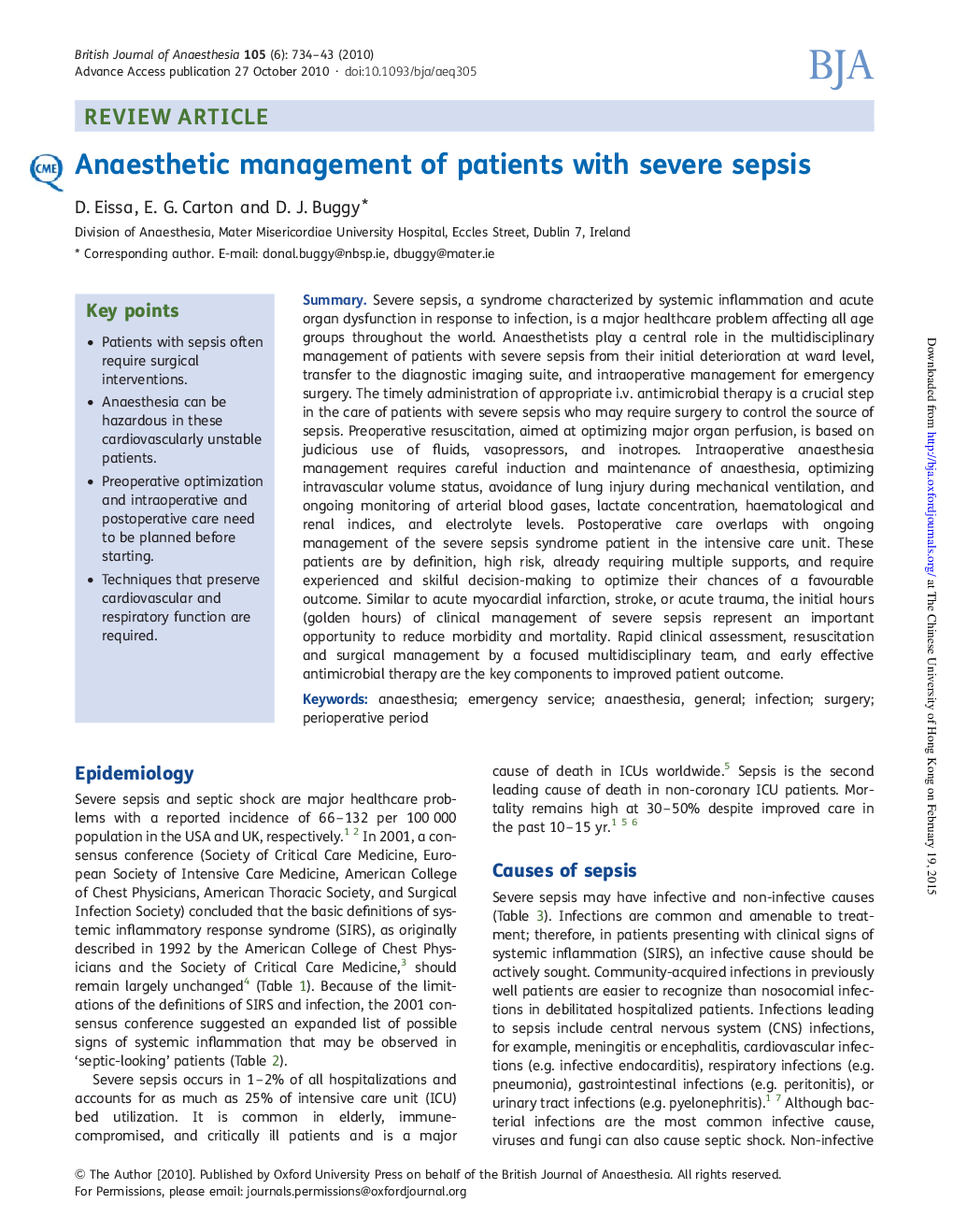| Article ID | Journal | Published Year | Pages | File Type |
|---|---|---|---|---|
| 8936199 | British Journal of Anaesthesia | 2010 | 10 Pages |
Abstract
Severe sepsis, a syndrome characterized by systemic inflammation and acute organ dysfunction in response to infection, is a major healthcare problem affecting all age groups throughout the world. Anaesthetists play a central role in the multidisciplinary management of patients with severe sepsis from their initial deterioration at ward level, transfer to the diagnostic imaging suite, and intraoperative management for emergency surgery. The timely administration of appropriate i.v. antimicrobial therapy is a crucial step in the care of patients with severe sepsis who may require surgery to control the source of sepsis. Preoperative resuscitation, aimed at optimizing major organ perfusion, is based on judicious use of fluids, vasopressors, and inotropes. Intraoperative anaesthesia management requires careful induction and maintenance of anaesthesia, optimizing intravascular volume status, avoidance of lung injury during mechanical ventilation, and ongoing monitoring of arterial blood gases, lactate concentration, haematological and renal indices, and electrolyte levels. Postoperative care overlaps with ongoing management of the severe sepsis syndrome patient in the intensive care unit. These patients are by definition, high risk, already requiring multiple supports, and require experienced and skilful decision-making to optimize their chances of a favourable outcome. Similar to acute myocardial infarction, stroke, or acute trauma, the initial hours (golden hours) of clinical management of severe sepsis represent an important opportunity to reduce morbidity and mortality. Rapid clinical assessment, resuscitation and surgical management by a focused multidisciplinary team, and early effective antimicrobial therapy are the key components to improved patient outcome.
Related Topics
Health Sciences
Medicine and Dentistry
Anesthesiology and Pain Medicine
Authors
D Eissa, E.G. Carton, D.J. Buggy,
